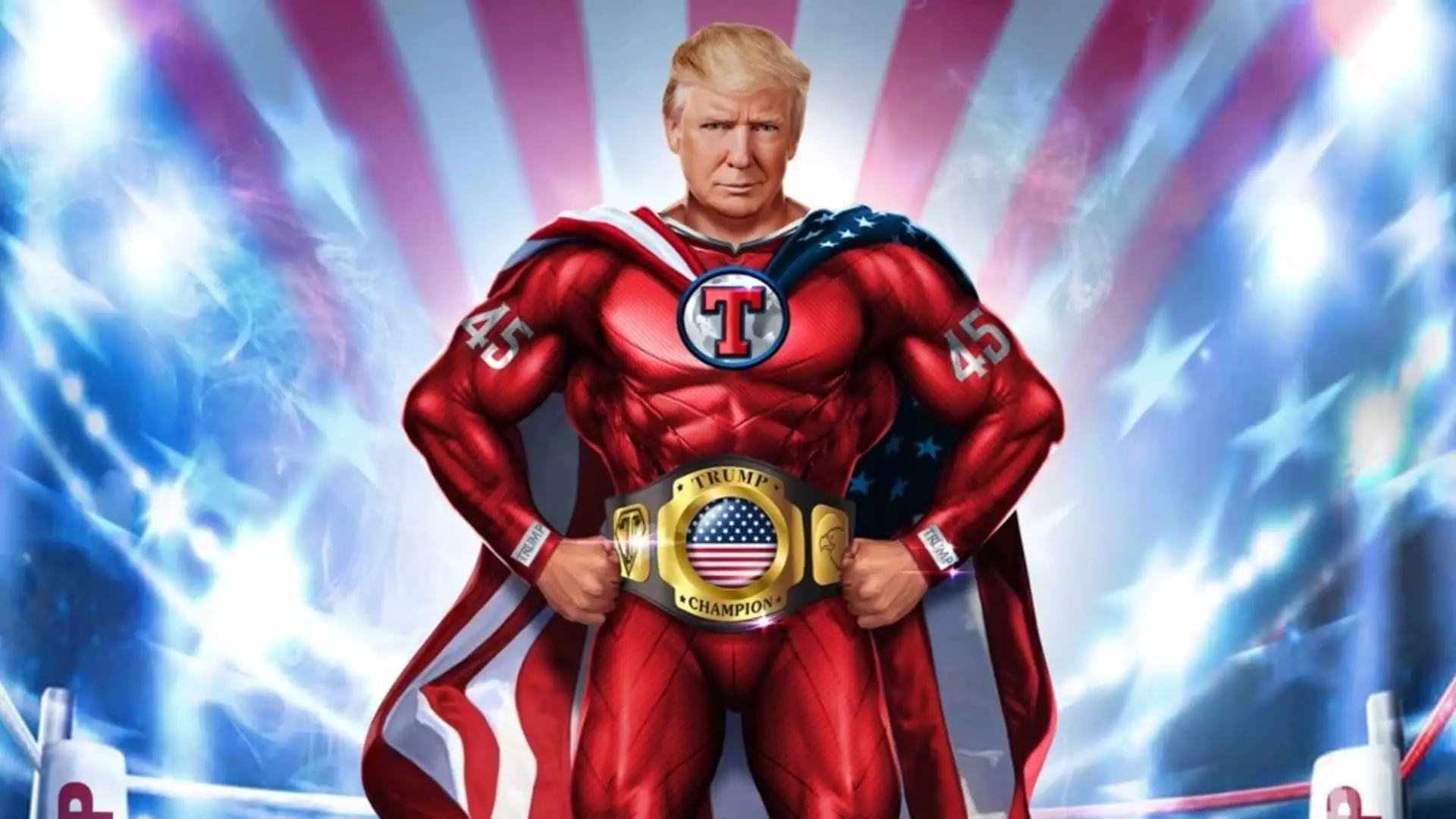In the rapidly evolving landscape of cryptocurrency, few figures spark as much debate as former President Donald Trump. As he gears up for the upcoming presidential election, Trump is venturing into the crypto realm with his latest initiative, the World Liberty Financial (WLF) project. The launch of its accompanying token, WLFI, marks a significant chapter in Trump’s ongoing business ventures, inviting a flurry of curiosity and skepticism surrounding its implications.
Set to debut amid an uptick in shares of Trump Media & Technology Group (DJT), WLFI is being touted as a gateway opportunity for investors eager to partake in the cryptocurrency revolution. Despite Trump’s promotional claims on social media, potential backers are left with more questions than answers regarding this project. Lacking a comprehensive white paper or clear business framework, the WLF initiative has been described by insiders as a “crypto bank” where users engage in borrowing, lending, and investing activities.
Many investors typically expect extensive information before committing funds, including business models and operational transparency; however, this project offers little of that assurance. The initial goal for WLF is an ambitious $300 million fundraising milestone, aiming for a valuation of $1.5 billion. The absence of critical details regarding the coin’s functionality raises red flags. In an environment where investor due diligence is paramount, WLF’s lack of clarity may deter seasoned investors wary of the risks associated with involvement in ventures led by high-profile individuals.
The WLFI token offering falls under Regulation D, indicating that its sale is limited primarily to accredited investors. This classification often excludes a broad base of everyday cryptocurrency enthusiasts, creating an aura of exclusivity around the investment opportunity. While this exclusivity can attract wealthy investors keen on potential returns, it also raises ethical concerns about accessibility and representation in the ever-democratizing world of decentralized finance.
Additionally, Trump’s familial and financial connections to the project stir controversy. With reports indicating that founding members, including Trump’s family, could receive a significant percentage of the tokens, concerns about the concentration of power and potential self-serving motivations loom large. Such arrangements may cast a shadow of doubt over the legitimacy and longevity of the WLF initiative, especially when considering past criticisms regarding transparency and governance in crypto projects.
In an effort to establish credibility, the WLF team has reached out to existing platforms like Aave, a leader in decentralized finance. Collaborating with trusted entities can bolster a project’s legitimacy; however, existing sentiments within the Aave community reveal skepticism about the association with Trump’s agenda. Various feedback on Aave’s governance forum raises concerns regarding the historical backgrounds of the key operators behind WLF. These sentiments highlight an uncomfortable intersection between politics and finance, bringing issues of trust to the forefront.
While the cryptocurrency landscape is no stranger to controversy, the stakes are significantly elevated when political figures become involved. The backlash against associations with individuals of questionable reputations could jeopardize the credibility of Aave’s platform, should it endorse WLF.
As WLFI prepares for its launch amid considerable hype, the outcome remains uncertain. The project’s initial setup appears akin to an “IOU” for token buyers, who may only receive tangible tokens if WLF successfully passes several approval stages. This precarious situation reflects a broader theme in the cryptocurrency industry, where the line between visionary endeavors and speculative risks can often blur.
Investors drawn to cryptocurrency’s potential transformative pathways must approach the WLFI offering with caution. Whether or not WLF can fulfill its ambitious vision of reshaping finance while overcoming doubts related to governance and transparency is yet to be seen. Ultimately, for Trump and his associates, the stakes are high, but the risks are equally significant. It remains to be seen if WLFI will be a groundbreaking venture or just another footnote in the contentious narrative of crypto history.

